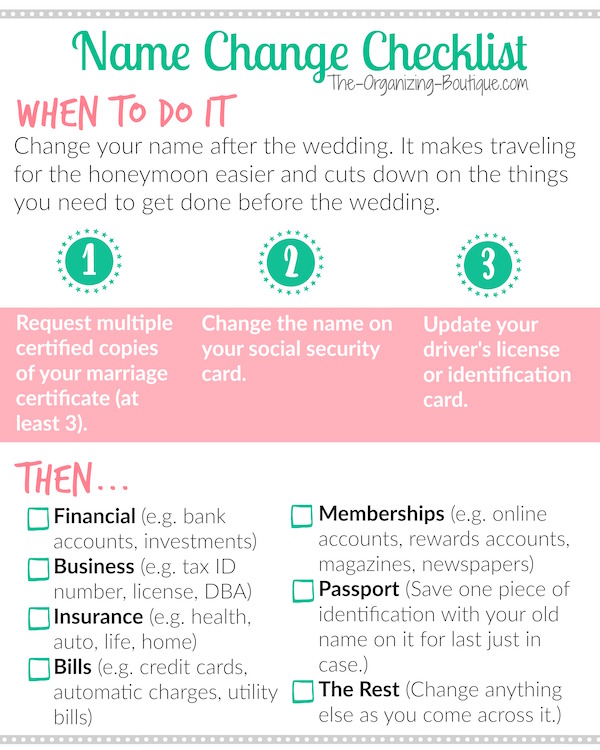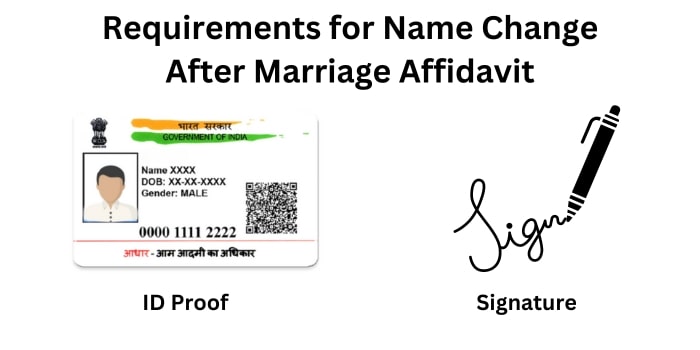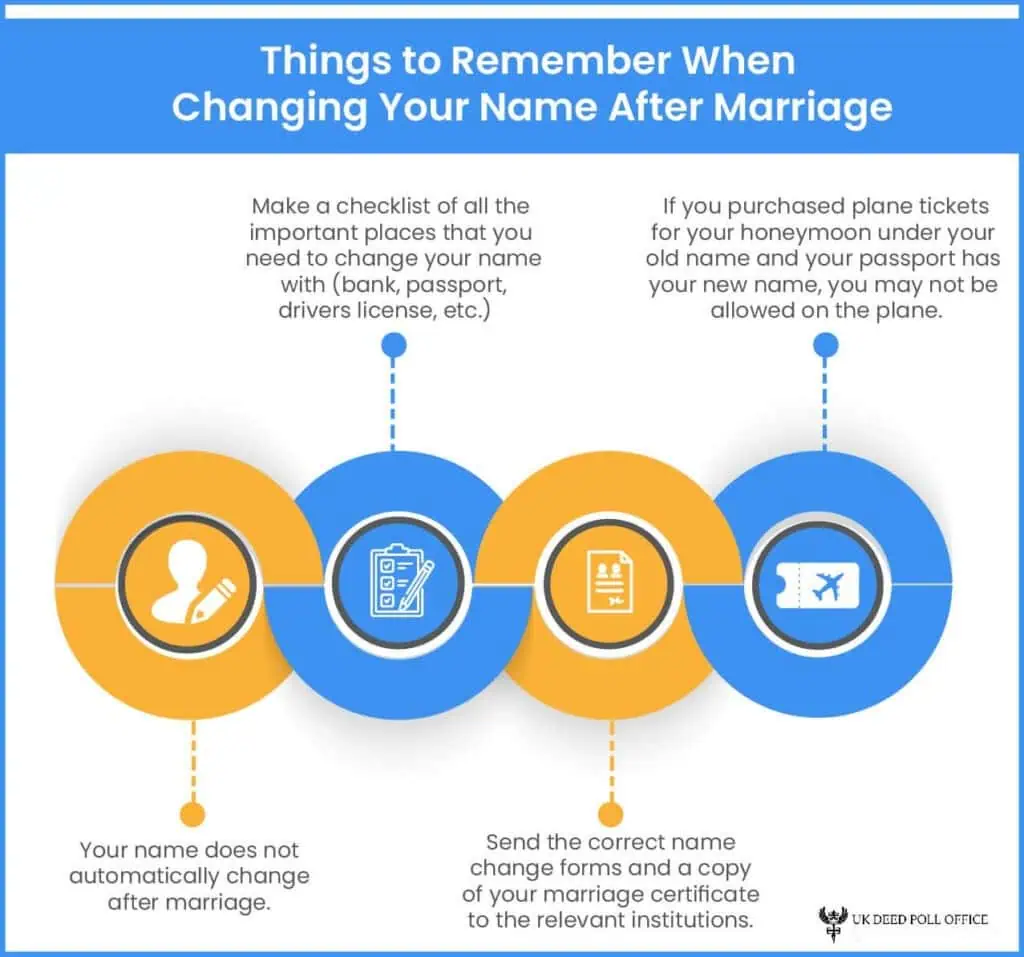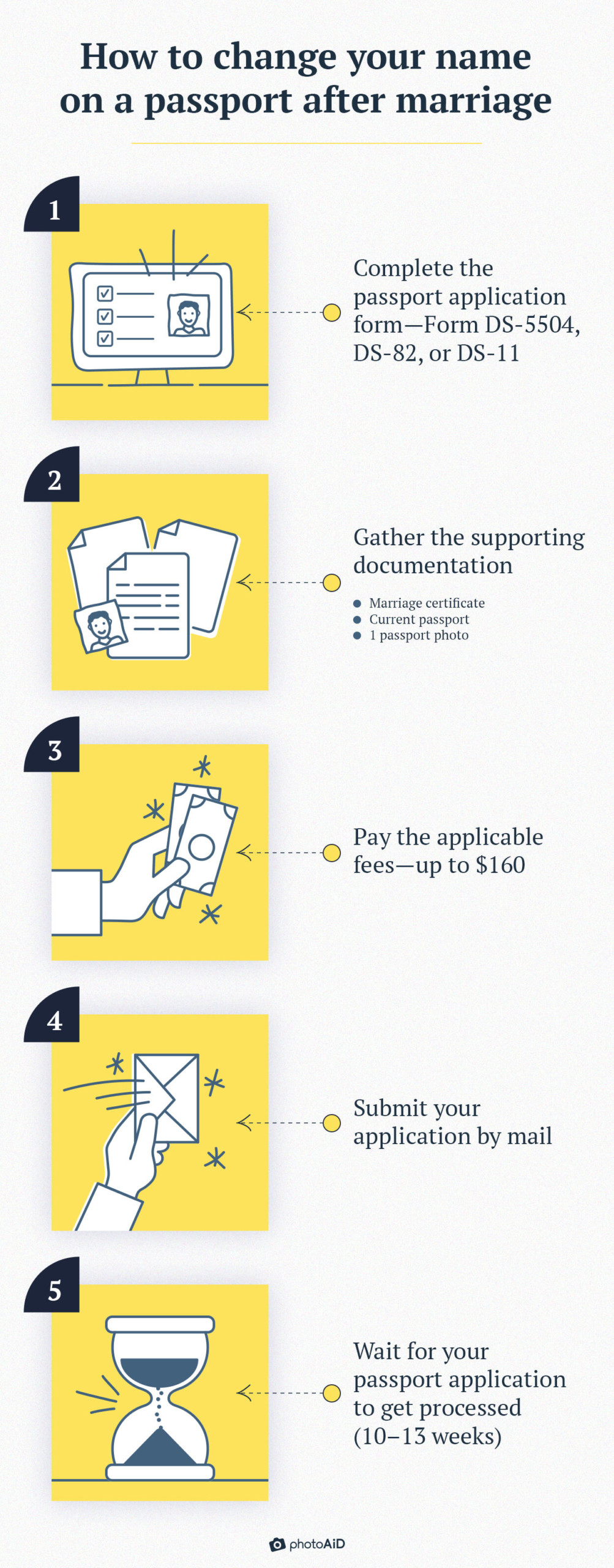How Do I Do A Name Change After Marriage

Imagine the day. The confetti settles, the vows still echo in your heart, and you're basking in the glow of newlywed bliss. But amidst the joy, a thought pops up: that new name. The one that signifies a shared future, a family united. It’s an exciting prospect, but the path to getting there can seem a little daunting.
This article serves as your friendly guide through the process of changing your name after marriage. We'll break down the steps, clarify the necessary paperwork, and offer tips to streamline the experience, ensuring this significant transition is as smooth and stress-free as possible.
The Marriage Certificate: Your Golden Ticket
The first step is securing certified copies of your marriage certificate. This document is the key to unlocking your new identity. Most official institutions will require it as proof of your legal name change.
Order multiple copies, as you'll need to submit them to various agencies. Keep the original safe and sound.
Social Security Card: Laying the Foundation
Your journey begins with the Social Security Administration (SSA). You’ll need to complete Form SS-5 (Application for a Social Security Card). This form can be downloaded from the SSA website or obtained at your local Social Security office.
You'll need to provide your marriage certificate and proof of identity, such as your driver's license or passport. Once processed, you'll receive a new Social Security card reflecting your married name.
Driver's License or State ID: Hitting the Road
Next up is your driver's license or state ID. Each state has its own procedures, so it’s essential to check your local Department of Motor Vehicles (DMV) website for specific requirements.
Generally, you'll need to bring your marriage certificate, your new Social Security card, and your current driver's license or ID. Be prepared to fill out an application form and pay a small fee. With an updated photo, you’ll be ready to drive into your future!
Passport: Ready for Take-off
If you plan to travel internationally, updating your passport is crucial. This process is handled by the U.S. Department of State.
If your passport was issued less than a year ago, you can use Form DS-5504 (Name Change, Data Correction, and Limited Passport Book Replacement). If it was issued more than a year ago, you'll need to use Form DS-82 (Passport Renewal Application) or, in some cases, Form DS-11 (Application for a U.S. Passport).
Along with the application, you'll need to submit your marriage certificate, your current passport, and a new passport photo.
Updating Your Records: The Home Stretch
Once you’ve tackled the major identity documents, it's time to update your records with various institutions. This includes your bank, credit card companies, employer, insurance providers, and any other organization where your name appears.
Many institutions will require a copy of your marriage certificate. Be patient, as this process can take time.
Don't forget about smaller, but still important, accounts. Consider updating your email address, social media profiles, and even loyalty programs.
Informing your employer is essential for payroll and benefits purposes. This ensures your paychecks and insurance coverage reflect your new name.
Updating your bank accounts and credit cards is crucial for financial security and preventing potential issues with transactions.
Contacting your insurance providers (health, auto, home) is essential for ensuring coverage remains valid.
Navigating the Nuances
Some individuals choose to hyphenate their last name or adopt their spouse's last name as a middle name. These decisions can influence the specific forms and procedures required. Research your state's regulations carefully.
If you're changing your name after a divorce, the process involves presenting a certified copy of your divorce decree, which restores your maiden name or allows you to choose a previous legal name.
For those choosing a more significant name change (beyond marriage-related options), a court order may be necessary.
According to a 2022 survey by The Knot, approximately 88% of women still choose to change their name after marriage in the United States. This tradition, while evolving, remains a significant marker of union for many couples.
Remember, the process of changing your name is a journey, not a race. Take it one step at a time, stay organized, and celebrate each milestone along the way. With a little patience and preparation, you'll navigate this transition with confidence and embrace your new identity with joy.


















